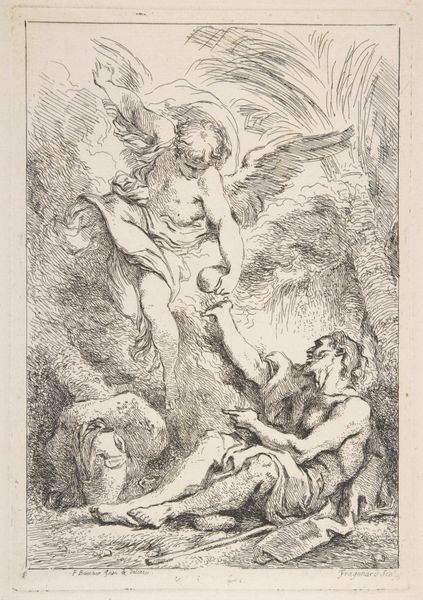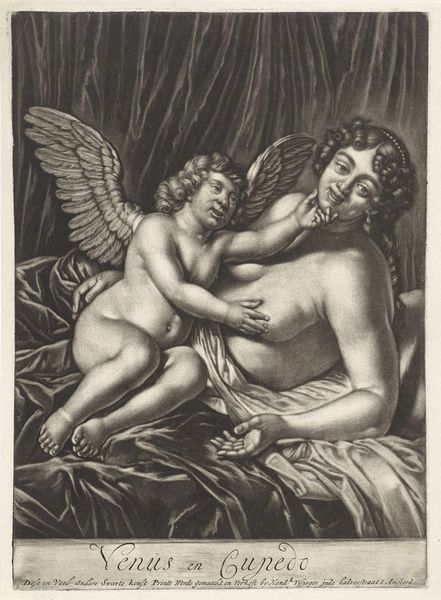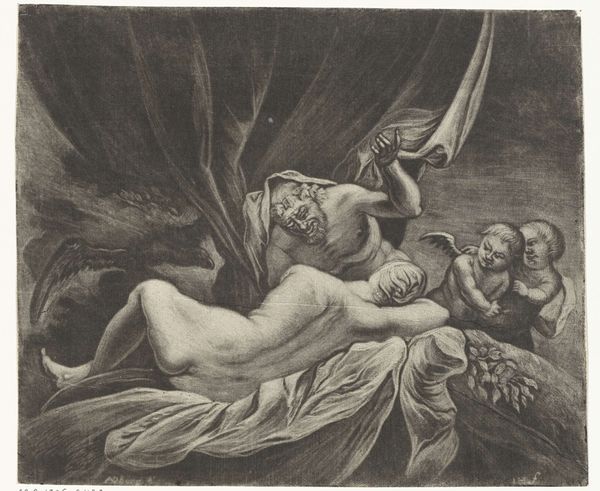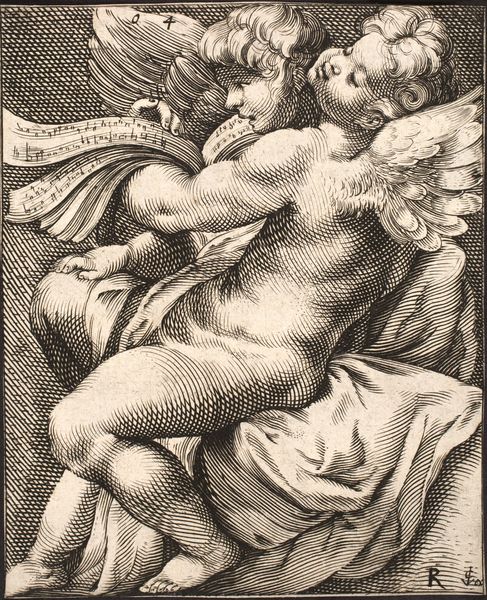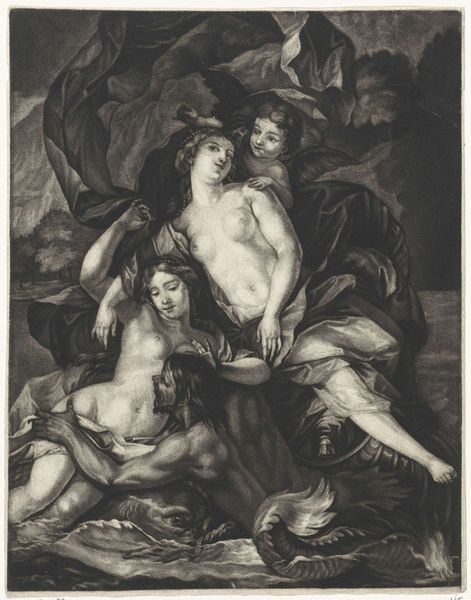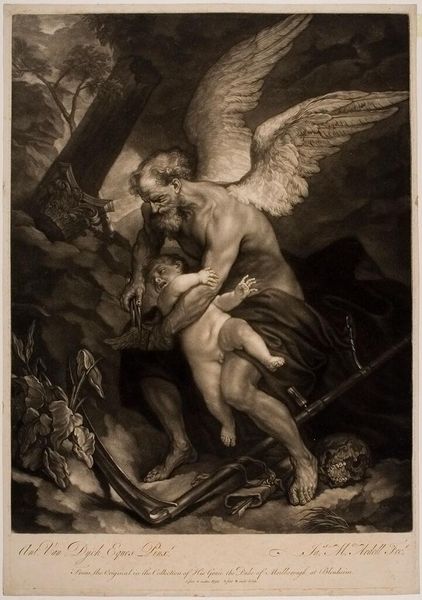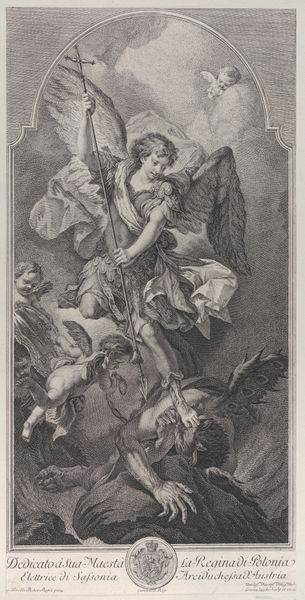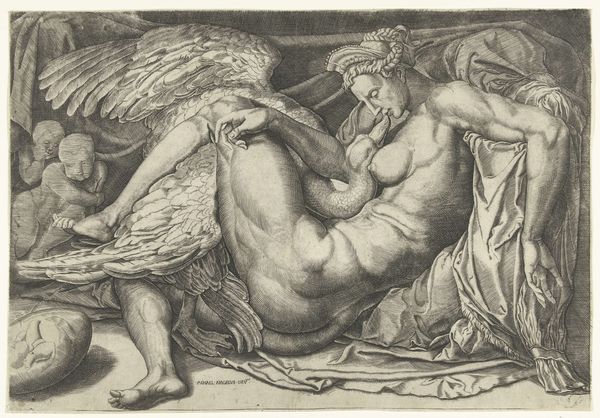
engraving
#
allegory
#
baroque
#
charcoal drawing
#
figuration
#
surrealism
#
line
#
history-painting
#
engraving
Dimensions: height 247 mm, width 184 mm
Copyright: Rijks Museum: Open Domain
Curator: Pieter Schenk’s engraving, "Tijd knipt de vleugels van Amor," which roughly translates to Time Clips the Wings of Cupid, strikes a rather unsettling chord. The monochromatic rendering casts a somber atmosphere. What's your immediate reading? Editor: The contrast! Look at the almost brutal way that time, depicted as an old winged man, manhandles the squirming cherubic figure. The allegory practically leaps off the page, doesn't it? It's an interesting example of baroque line work. Curator: Baroque indeed, especially given its overt, allegorical content. Let’s unpack some context. The engraving, believed to be crafted between 1670 and 1713, operates within a well-worn trope: the transience of love, or more broadly, the futility of resisting time’s relentless march. Schenk renders Time not as a gentle guide, but as a rather aggressive assailant. Editor: And there's so much embedded symbolism. We see the quiver of arrows on the ground, clearly Love’s accoutrements, discarded as Time does his work. The crumbling architecture in the background suggests that even the grandest structures, even the most lasting ideas, are no match for Time’s destructive power. The linear nature and composition are impeccable, creating visual tension with high contrast to communicate the urgency of lost love. Curator: The strategic positioning, as you observe, elevates the overall effect. From a broader societal perspective, remember the era; this artwork appears amidst a burgeoning print culture where imagery played an active role in articulating cultural anxieties and conveying moral lessons, largely distributed to the masses. Editor: Right, it wasn's just a pretty picture. It acted as a moralizing agent. It’s curious how artists used and re-used similar tropes across epochs, signaling shifting understandings of power and its representation. That the museum houses it speaks to how such works continue to resonate, beyond their initial context. It suggests cultural norms can shift but still rely on accepted concepts of aesthetics to bridge history. Curator: Well stated. These layered artistic meanings surely are more complex, and I would concur; their enduring power stems not merely from technical competence or even social context but from a remarkable and enduring depiction of human emotion that carries on to this day. Editor: I agree; viewing art like this makes one wonder how its lessons shape us even now, without realizing it. It's art serving history.
Comments
No comments
Be the first to comment and join the conversation on the ultimate creative platform.
